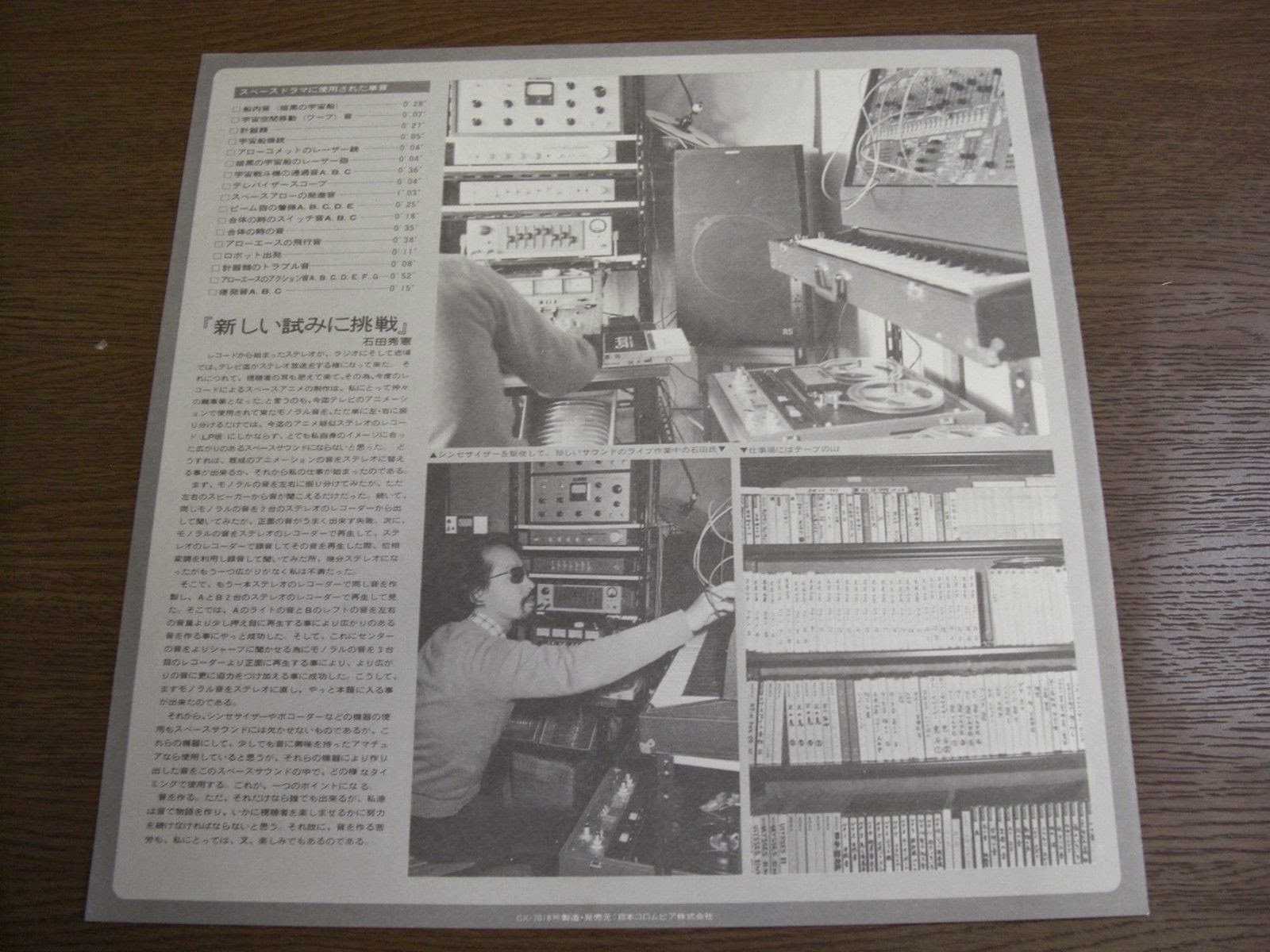Found these photographs of a sound effects LP called "Sound Of Anime
Ishida Hidenori" on ebay. Looks like an ARP 2600. Ishida Hidenori is a
giant in anime Sound Design, having founded Ishida Sound in 1971, which
later became Fizz Sound Creation. Wikipedia entry.
You can see a photo of a bunch of their sound design audio tape reels on their current website:
http://www.fizz-sound.co.jp/. The first ones have Dragon Ball written on the them!





